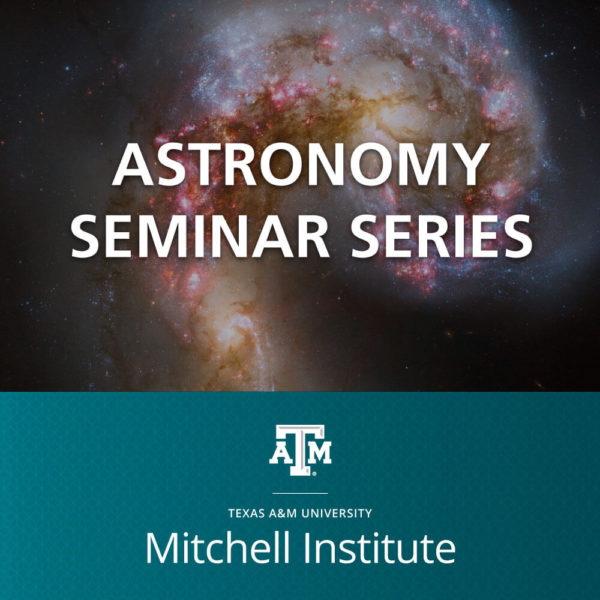
Speaker:
Caroline Morley (University of Texas, Austin)
Host:
Stephanie Ho
Location:
Address:
Mitchell Institute for Fundamental Physics & Astronomy
College Station, Texas 77843
As exoplanet astronomers, we currently stand at a threshold: with current and near-future discoveries from TESS, we have now discovered many of the nearby planets we share our neighborhood with. The Hubble and Spitzer space telescopes, as well as dedicated ground-based efforts, have provided a taste of the diversity of atmospheres these worlds have. The largest and hottest have atmospheres like stars, with metals and ions. Many have atmospheres that, like those in the solar system, are filled with clouds/hazes (but a much larger variety). Some of the smallest planets we’ve observed, the size of the Earth, may retain atmospheres, but at least some appear to have lost their atmospheres during their lifetimes. Armed with these hints (and our increasingly complete census of nearby planets), exoplanet astronomers are chomping at the bit for the next step, which will be facilitated by the launch of the James Webb Space Telescope: to characterize in detail the atmospheres of our neighbors, large and small. I will discuss some of the types of programs that can be done with JWST that will progress our knowledge of planetary physics the most. I will discuss what the prospects are for gas giants, including those much colder than any discovered to date; for sub-Neptunes, between Earth and Neptune in size, for which no solar system analogs exist, but which are among the most numerous planets; and finally, I will discuss the prospects for observing Earths (both hot and “habitable”) with JWST.
Copyright © 2024. All rights reserved, Texas A&M University Trademark | Texas A&M University, College Station, Texas 77843